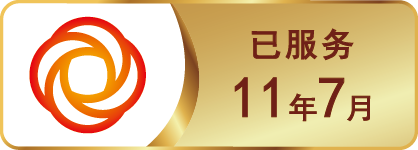
A craftsman weaves Atlas silk at a workshop in Jiya village of Hotan prefecture, Xinjiang Uygur autonomous region. (Photo/Xinhua)
Tajinisa is proud of her deep purple hands. The indelible dye stains on the 51-year-old craftswoman's hands are testament to her decades of toil dyeing and weaving Atlas silk, a national intangible cultural heritage.
She is one of the most skilled Atlas silk masters in Jiya village of Hotan prefecture, Xinjiang Uygur autonomous region, the birthplace of the exquisite fabric.
Famous for its rich and bright colors graced with distinctive zigzag patterns, Atlas silk has been used by Uygur women for clothing and interior design for centuries.
Legend has it that during the Han dynasty (206 BC-220 AD), a princess who came to the region to get married brought a silkworm cocoon with her, and residents soon began to raise silkworms of their own.
The story is supported by artifacts in the Shanpulu ancient tomb and Niya town relics. Various unearthed silk remnants and weaving tools help narrate the history of Atlas silk, which dates back to the time of the Silk Road.
In Hotan, manufacturing techniques of the ancient fabric have barely changed over the past 2,000 years.
Tasks including winding silk, spinning thread, dyeing and weaving are still performed using age-old techniques. It takes much more time to produce Atlas silk by hand than producing synthetic silk by machine. Even the most skilled hands can only weave 3 meters a day.
Due to low output, meager profits and the negative impact of the modern textile industry, Atlas silk manufacturing has been on the decline for years. Many villagers whose families had been weaving for generations turned to other lines of work to make ends meet.
To rejuvenate the industry, the local government has been giving away Atlas silk weaving machines and inviting experienced craftspeople to give tuition-free training to villagers.
Fashion designers have also started using the material in their creations, expertly combining the traditional art with modern techniques and proudly bringing the fabric to the catwalk.
In recent years, fashion shows featuring Atlas silk have been staged in cities including Urumqi, the Xinjiang capital, and Beijing.
Alim Adil, a young Uygur fashion designer, said Atlas silk is an embodiment of the wisdom and charm of the ethnic group that should be passed on.
"I believe one day Atlas silk will be seen on the world's stages," he said.
Tajinisa now works in the biggest Atlas silk company in her village. Besides pattern design and dyeing, she also teaches young workers.
She said Atlas silk products have become much more diverse nowadays. In addition to clothes, there are also bags, hats and scarves.
She earns up to 5,000 yuan ($800) a month, a good income for the area. In 2016, the company had a turnover of 520,000 yuan, and created more than 180 jobs for residents.
Atlas silk products have been sold to about 25 countries and regions, attracting buyers from countries including the United States and Germany. The products also sell well online.
Jiya is home to 6,000 households, 2,400 of which are now working in the Atlas silk industry. There are now more than 50 Atlas silk factories, associations and cooperatives. The silk industry brings over 1,200 yuan of net income per villager annually.
Practitioners are proving that making Atlas silk on the Silk Road is a road back to prosperity.




















































